Physical Address
304 North Cardinal St.
Dorchester Center, MA 02124
Giant cell tumor of bone is a relatively common bone tumor of intermediate malignancy that typically affects the epiphysis of long bones in skeletally mature individuals. The tumor is characterized by neoplastic mononuclear cells that harbor H3F3A G34 mutation and a large number of reactive osteoclast-like giant cells. Malignant transformation rarely occurs; primary malignant giant cell tumor is defined as a sarcoma juxtaposed to a conventional giant cell tumor, whereas secondary malignant giant cell tumor is a sarcoma arising as a recurrence of a conventional giant cell tumor.
Giant cell tumor of bone develops in skeletally mature patients with a peak incidence during the third to fifth decades and has a slight female predilection. The patient usually presents with pain, swelling, or pathological fracture. The tumor typically involves the meta-epiphysis or epiphysis of long bones; the most common sites are the distal femur, proximal tibia, and distal radius. Within the axial skeleton, the sacrum is the most common site; when the tumor affects the mobile spine, it arises from the vertebral body and not the posterior elements; a tumor confined to the posterior elements is highly unlikely to be a giant cell tumor of bone. Craniofacial bones and short tubular bones are rarely affected. Multifocal giant cell tumors have been reported usually in association with Paget disease, but otherwise are extremely rare. When giant cell tumor of bone arises in children, it usually affects teenage girls with a closed growth plate. However, rare examples occur in younger children with an open growth plate, and in such cases, the tumor is typically located in the metaphysis.
Plain radiograph shows a well-circumscribed, eccentric, purely lytic lesion extending to the epiphysis, often abutting the articular cartilage ( Fig. 20.1 ). Peripheral sclerosis is uncommon, except for old inactive lesions with secondary changes. The cortex may be attenuated and expanded, with cortical integrity being unapparent on X-ray. Axial lesions with massive bone destruction are best visualized by computed tomography (CT) ( Fig. 20.2 ). Soft tissue invasion or lung metastasis can have peripheral “egg-shell” calcifications. Active periosteal reaction is absent outside the setting of a fracture. Fluid-fluid levels can be seen in a tumor with aneurysmal bone cyst-like changes. Bone scintigraphy typically shows a ringed uptake at the periphery of the lesion (“doughnut sign”). After denosumab therapy, the tumor usually appears as a densely sclerotic mass; the sclerosis starts at the periphery of the tumor and extends centrally. The imaging of malignant giant cell tumors is variable, ranging from ill-defined, highly destructive tumors, to lesions that are radiologically indistinguishable from conventional giant cell tumor.
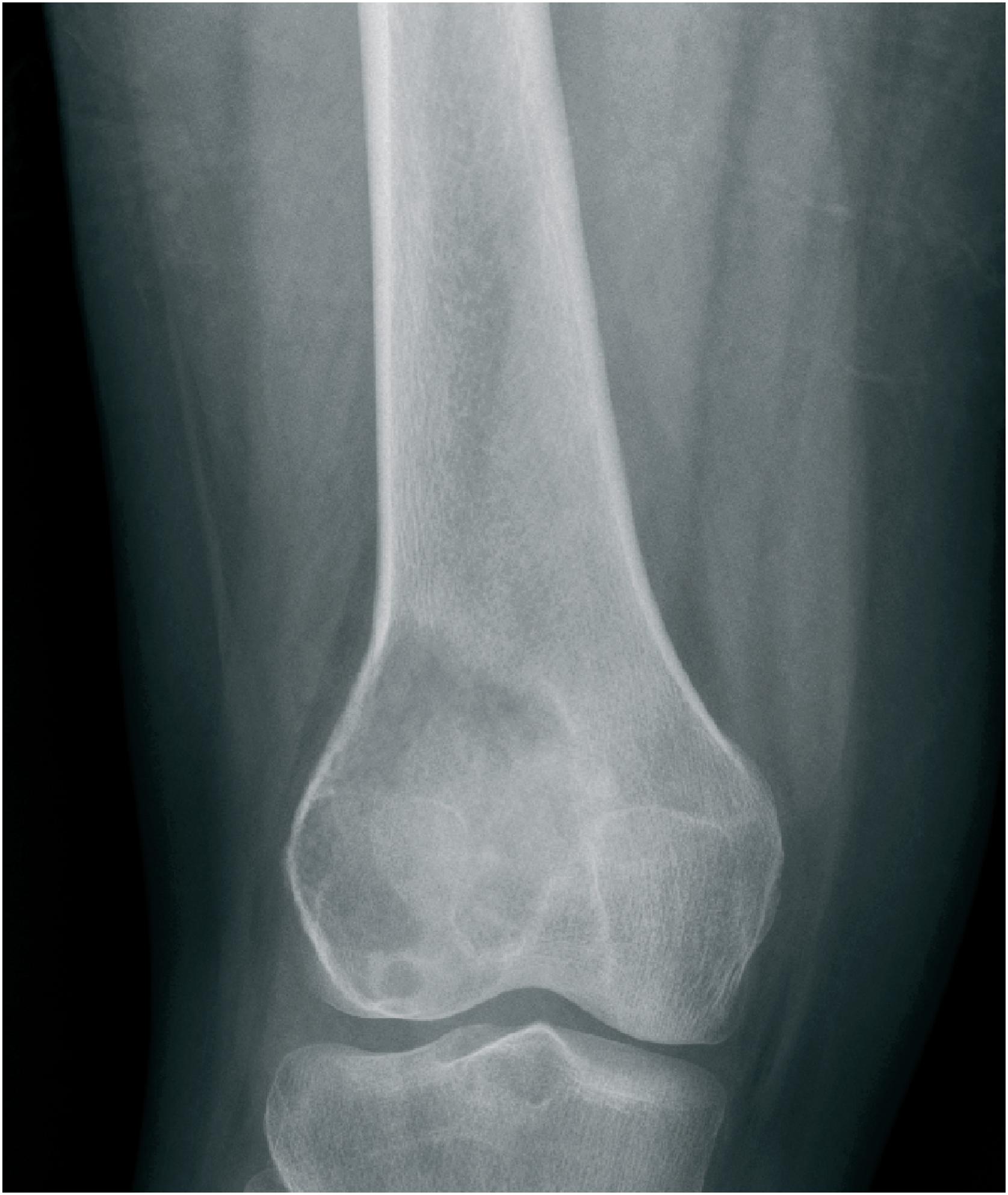
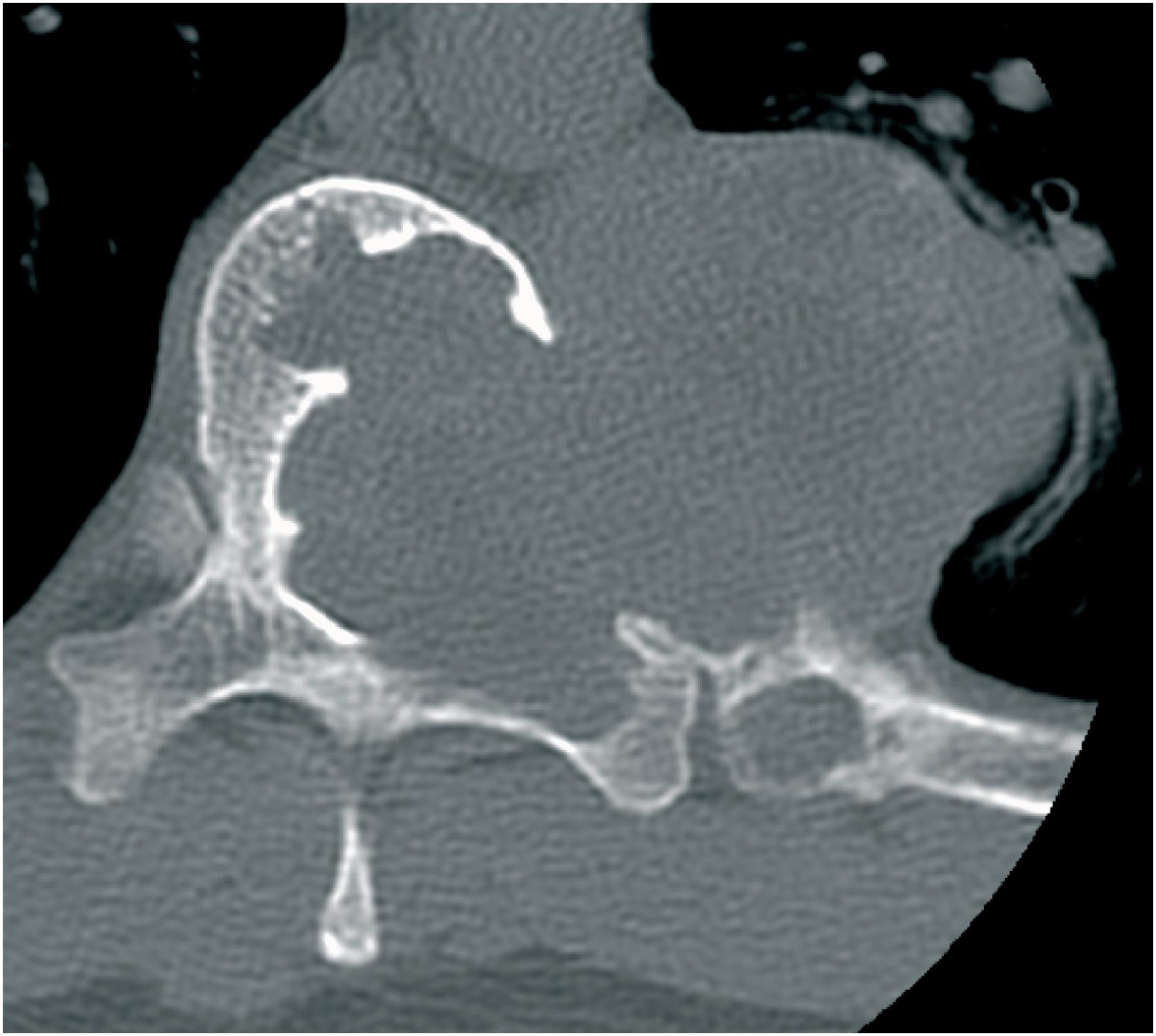
Giant cell tumor of bone consists of soft tan-brown tissue with frequent secondary changes, including hemorrhage, cystification, and bright yellow areas representing xanthogranulomatous foci. In a resection specimen, the tumor is sharply demarcated, with no entrapment of cancellous bone ( Fig. 20.3 ). After denosumab therapy, the tumor is white-grey solid and rubbery with calcifications ( Fig. 20.4 ). Malignant giant cell tumor typically shows tan fish-fleshy or firm, solid appearance with areas of necrosis.
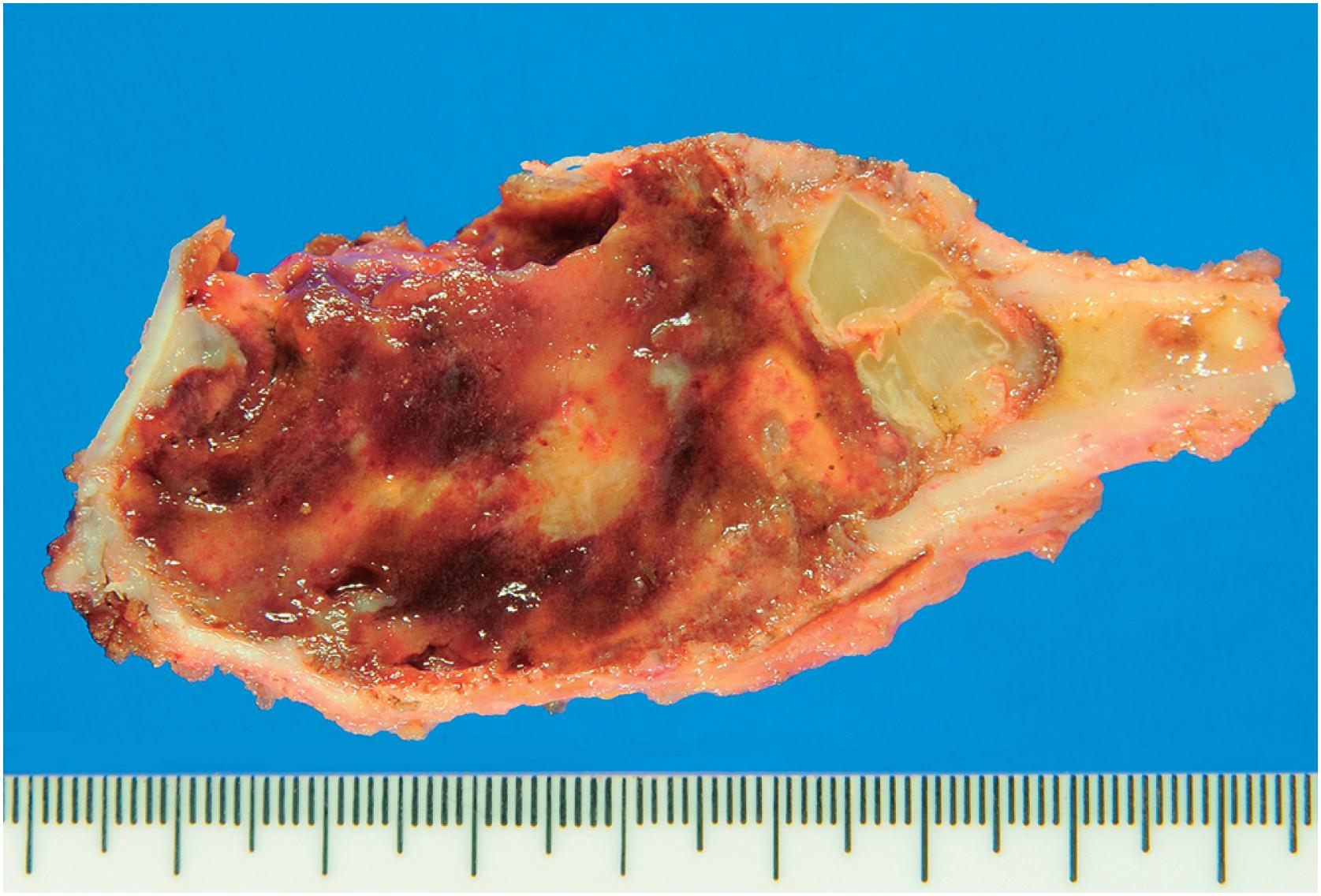
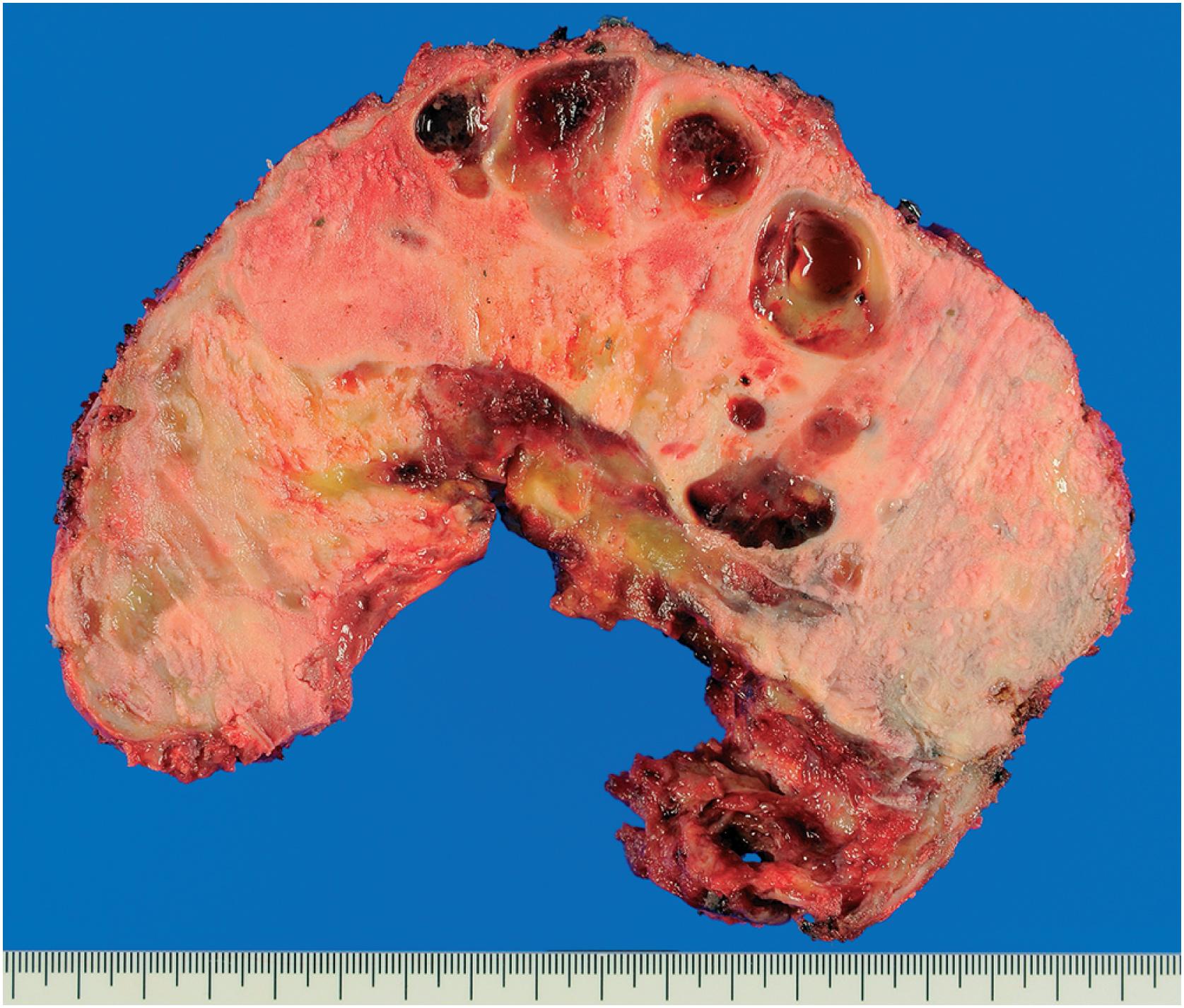
Giant cell tumor of bone is composed of sheets of mononuclear cells admixed with numerous osteoclast-like giant cells ( Fig. 20.5 ). Mononuclear cells are uniform, short, oval to spindle-shaped with indistinct cytoplasmic borders and bland nuclei ( Fig. 20.6 ). These cells are randomly arranged or demonstrate a vague storiform or short fascicular growth pattern. The giant cells are usually evenly distributed throughout the tumor, rather than clustering around areas of hemorrhage. These giant cells are much larger than normal osteoclasts and often harbor numerous (sometimes >50) nuclei. Mononuclear cells may be mitotically active (typically up to 20/10 high-power fields [HPF]), but abnormal forms are not seen. The presence of atypical mitosis should raise suspicion of malignancy. Matrix formation is common within giant cell tumors, usually in the form of reactive trabecular bone with osteoblastic rimming along incipient fibrous septa ( Fig. 20.7 ). However, some bone can be present in the center of the mass, intimately associated with the neoplastic mononuclear cells. Exceptional examples contain hyaline cartilage. Infarct-type necrosis and vascular invasion may be present, which do not herald malignant behavior. Secondary changes are common, including xanthogranulomatous, fibrohistiocytic ( Fig. 20.8 ), and aneurysmal bone cyst-like changes ( Fig. 20.9 ), sometimes to the degree that the conventional histology is obscured. Mononuclear tumor cells may rarely demonstrate degenerative nuclear atypia (“pseudoanaplasia”) in the form of smudgy chromatin, lobulation, and intranuclear pseudoinclusions ( Fig. 20.10 ). Differentiating pseudoanaplasia from true anaplasia is often challenging in biopsy specimens. In resection specimens, the tumor border is sharp, and a permeative growth pattern is absent. Soft tissue extension and lung metastases may be surrounded by a shell of bone.
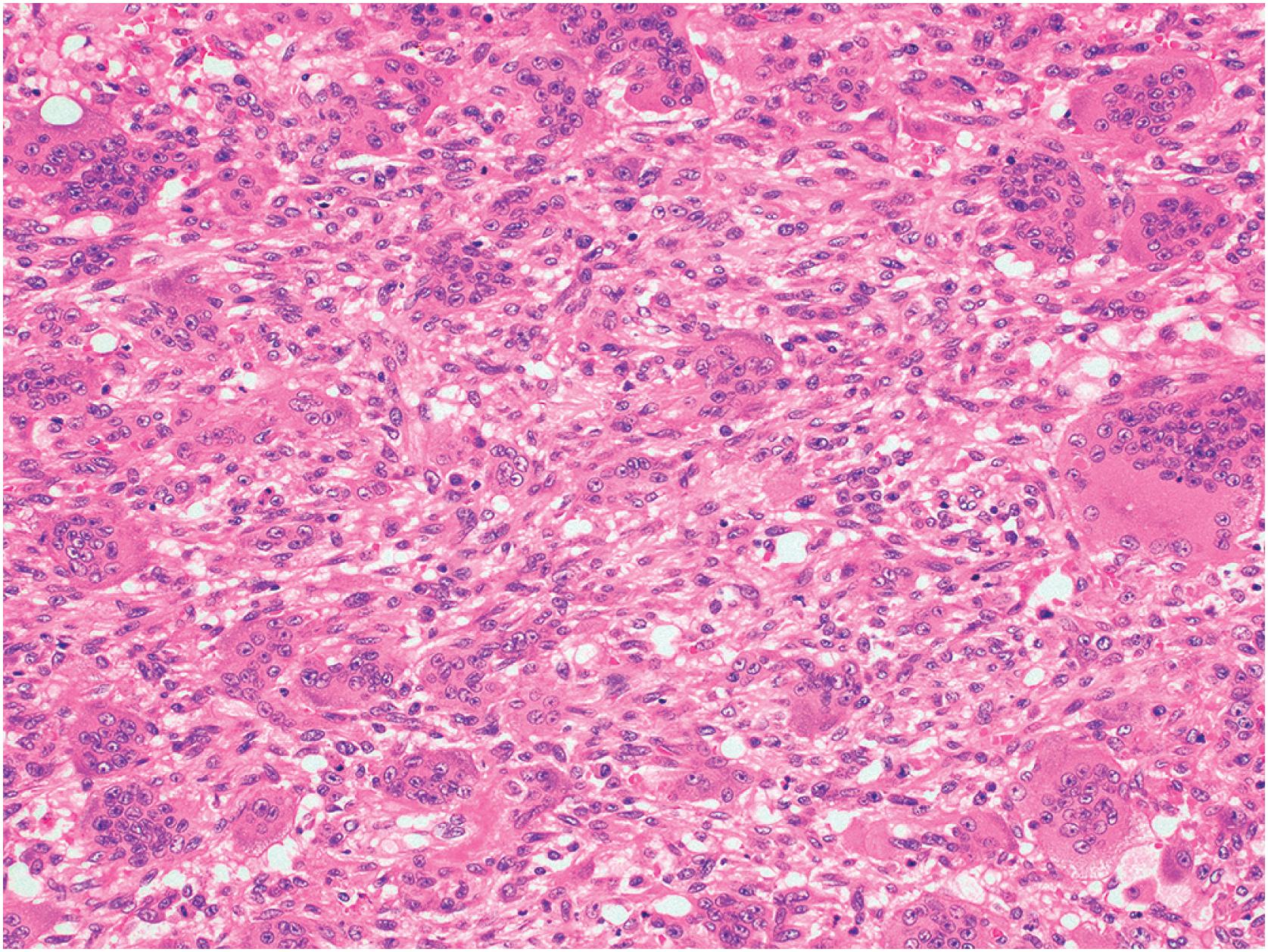
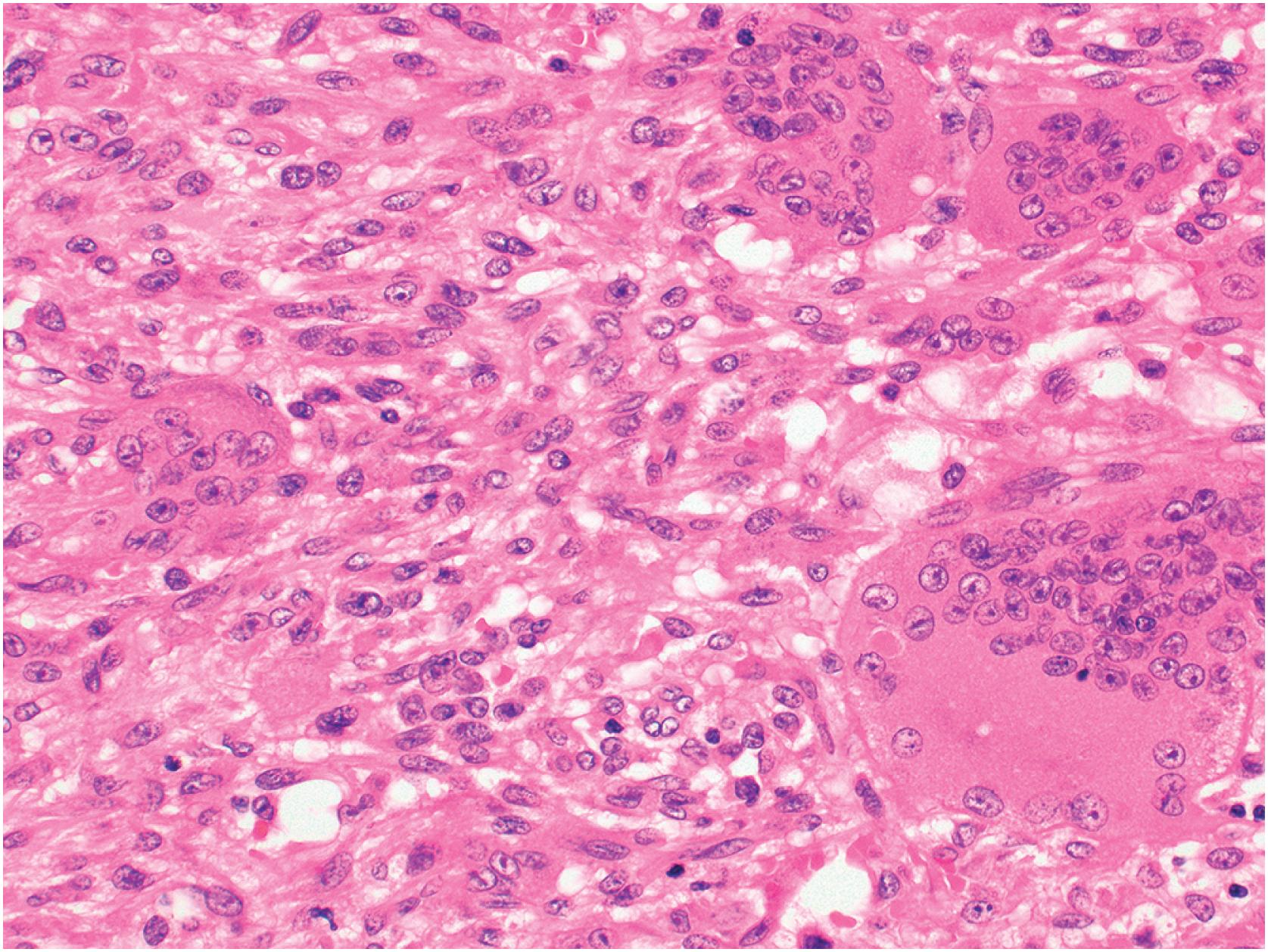
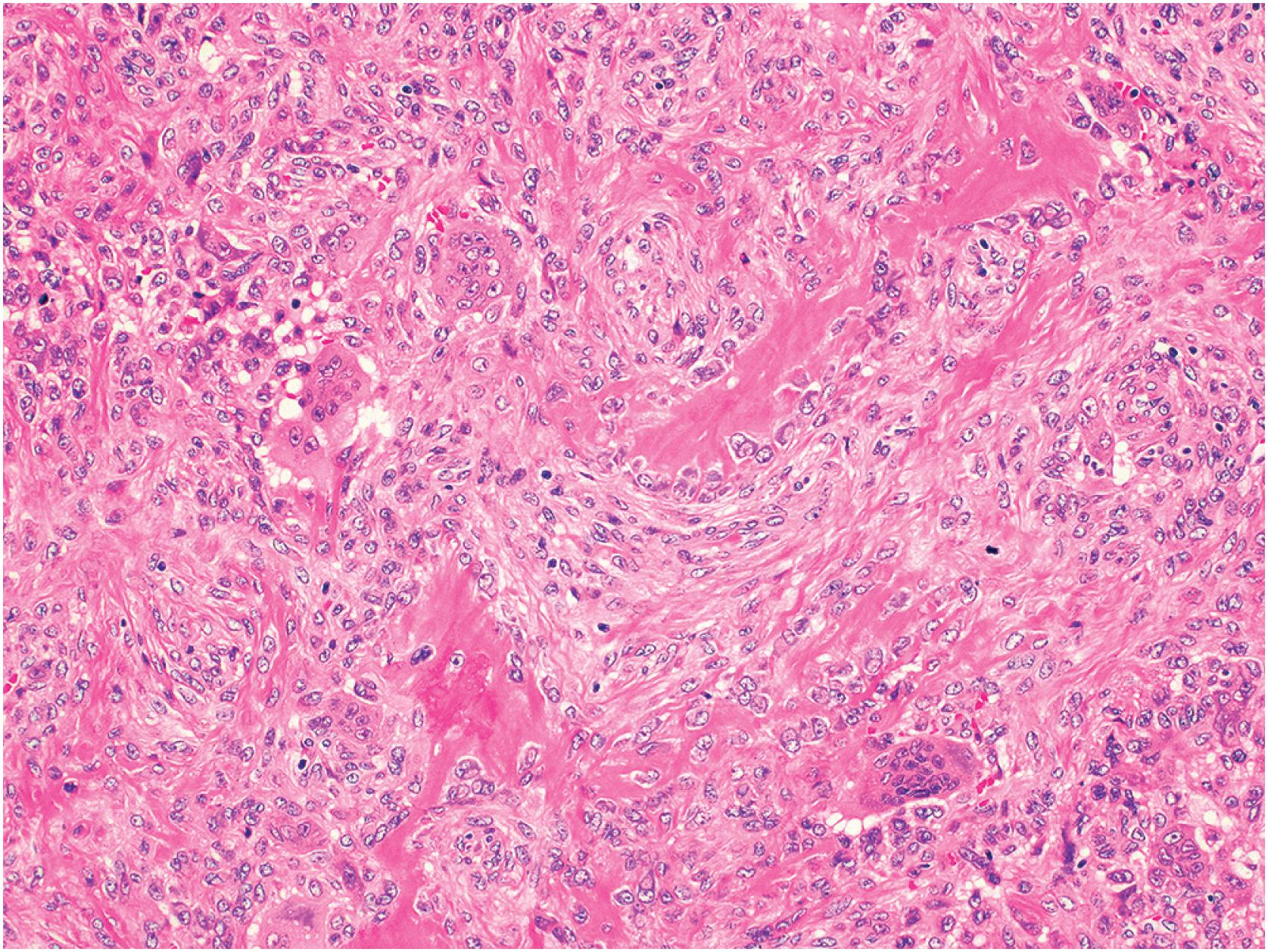
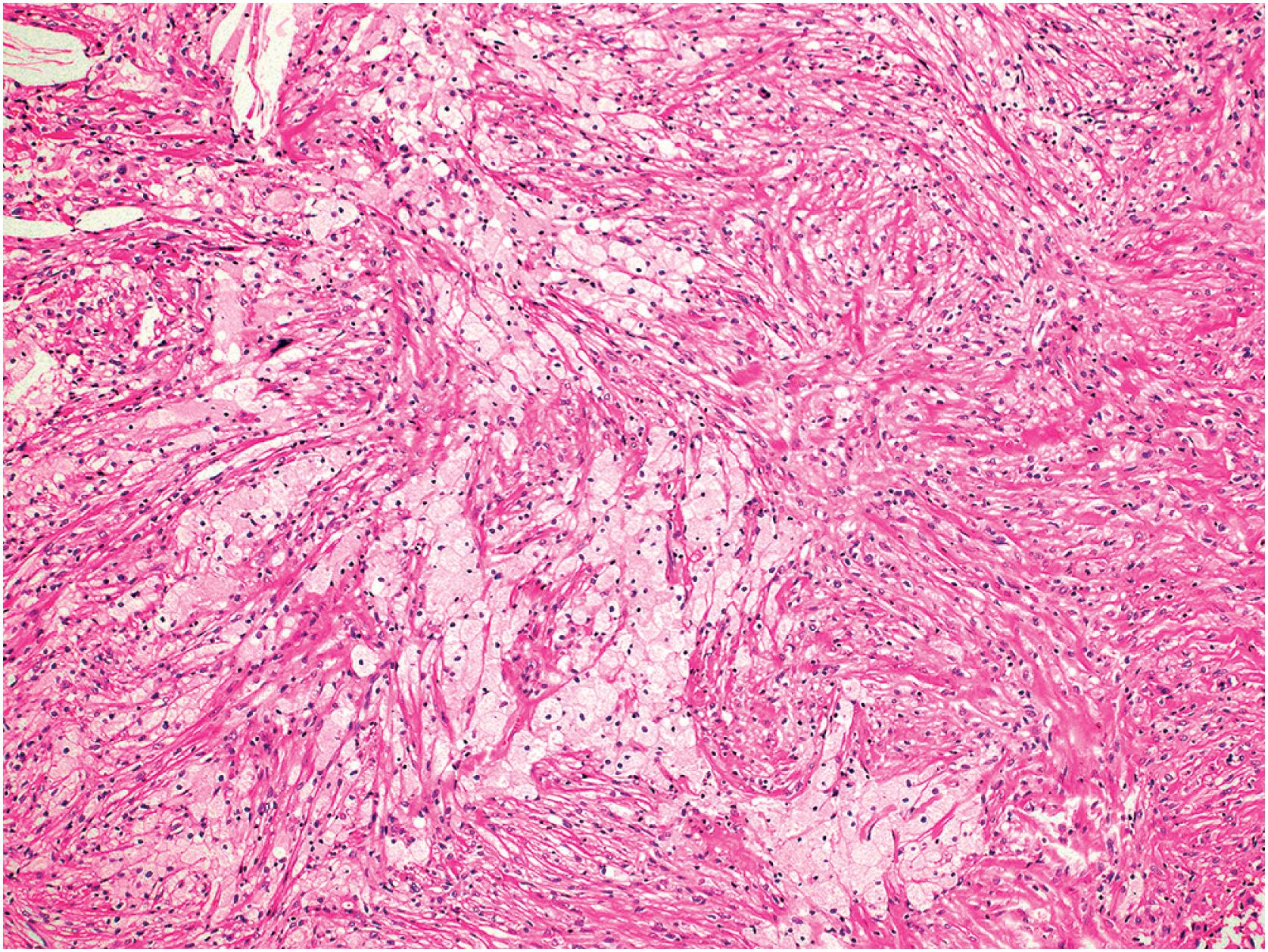
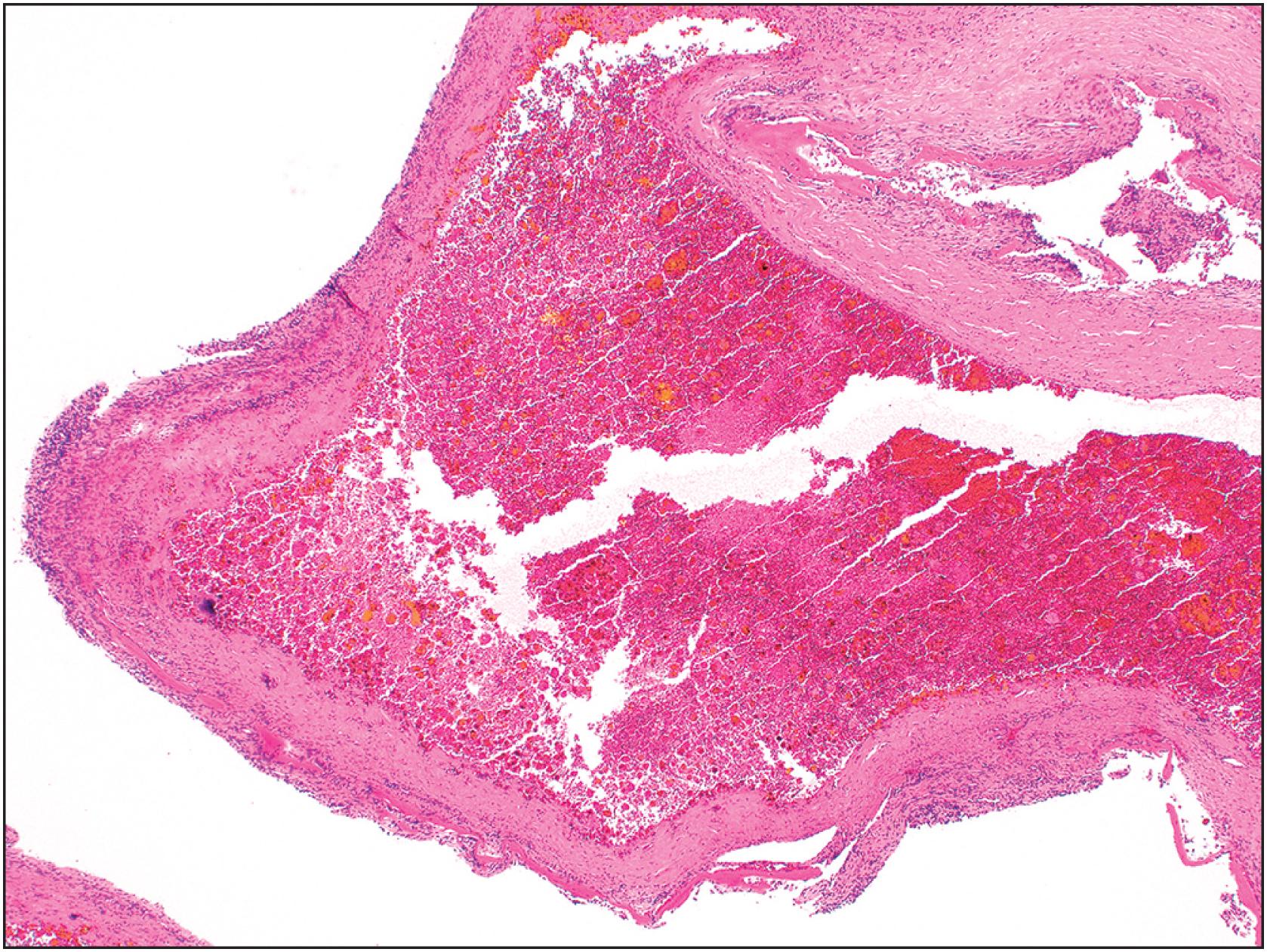
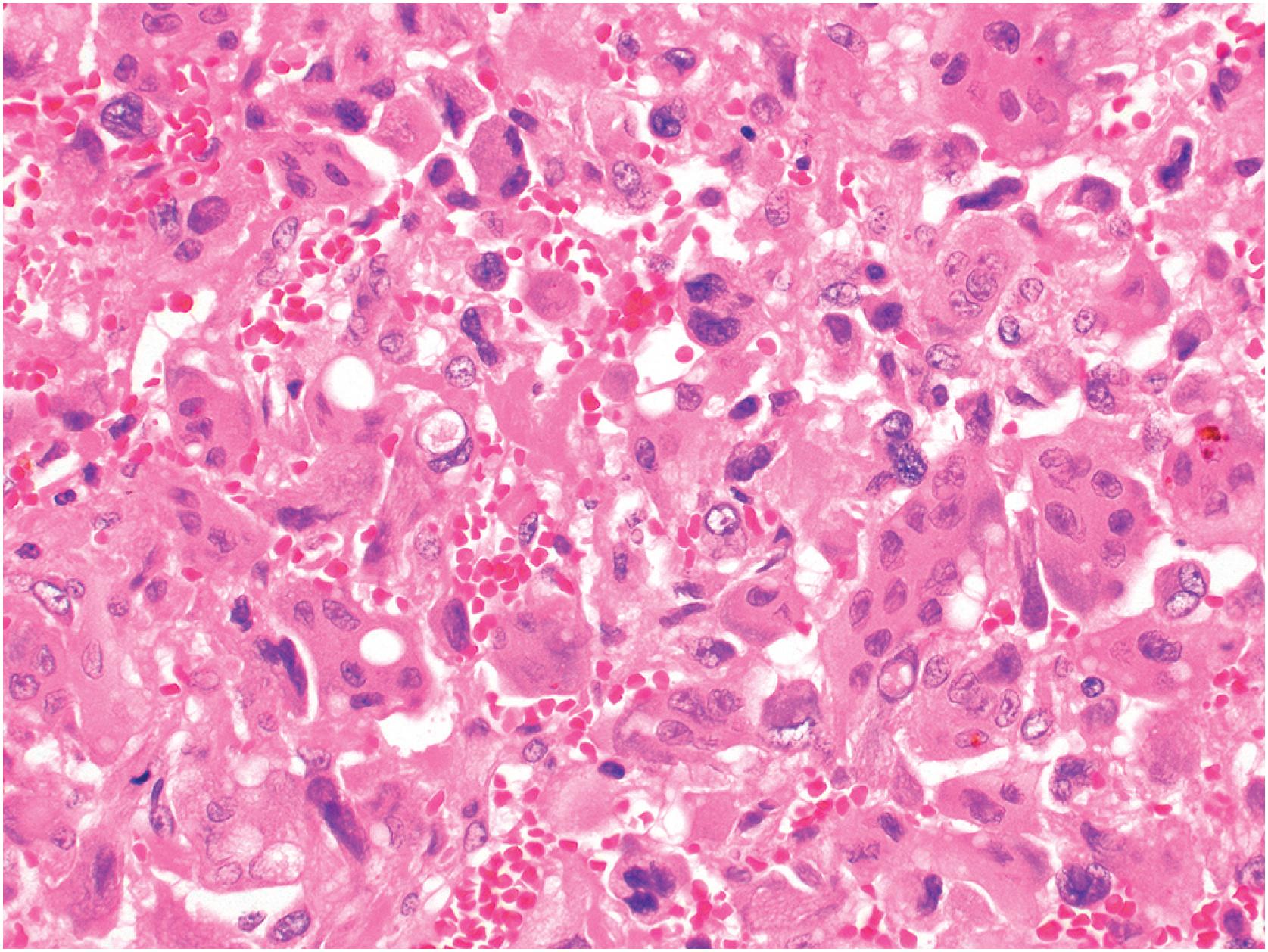
After denosumab therapy, osteoclast-like giant cells become depleted, leaving a fascicular growth of spindled cells associated with bone formation. The spindled cells lack nuclear atypia, and the deposited bone is regularly distributed ( Fig. 20.11 ).
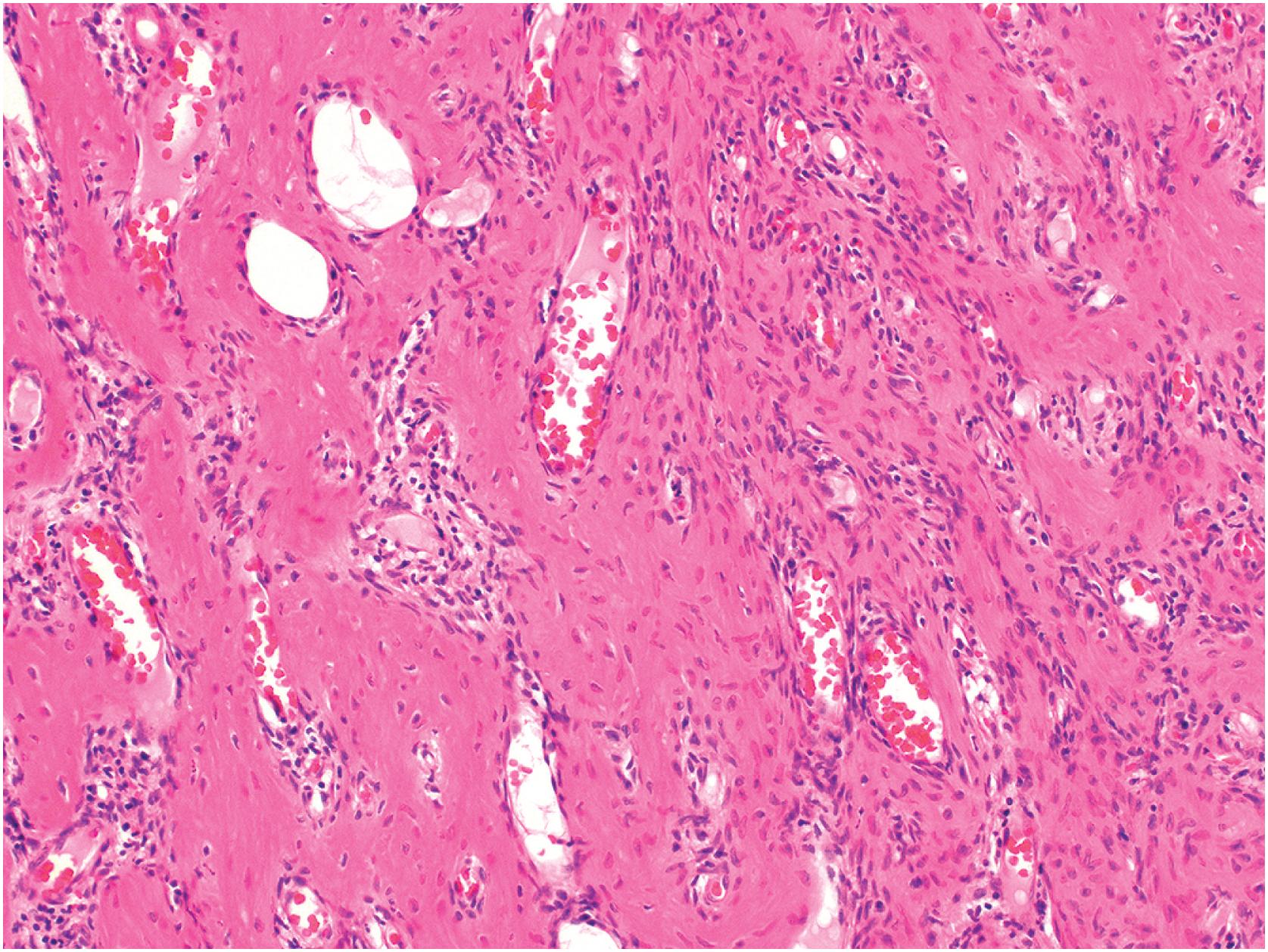
Most malignant giant cell tumors of bone have the histologic features of osteosarcoma, undifferentiated pleomorphic sarcoma, or fibrosarcoma. The tumor usually demonstrates atypical cells with high mitotic activity and coagulative necrosis ( Fig. 20.12 ). Many tumors show significant nuclear pleomorphism, but some examples show relatively uniform cells. Osteoclast-like giant cells may or may not be present. In primary malignant giant cell tumor, conventional giant cell tumor histology is seen in juxtaposition to the high-grade sarcoma, while in secondary malignant giant cell tumor, conventional giant cell tumor is often unrecognizable.
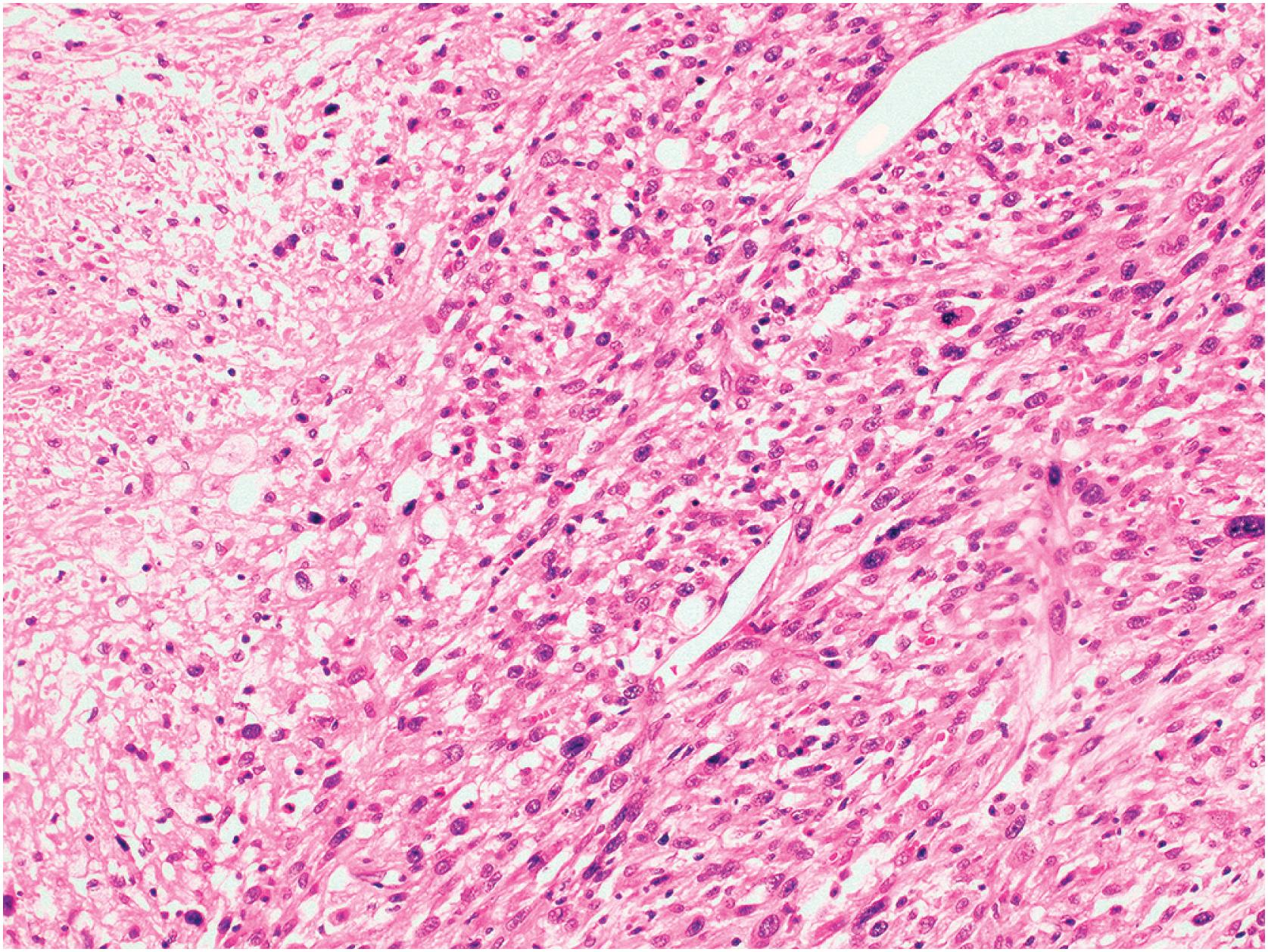
Become a Clinical Tree membership for Full access and enjoy Unlimited articles
If you are a member. Log in here